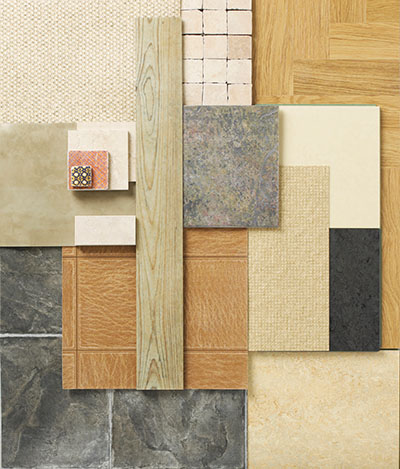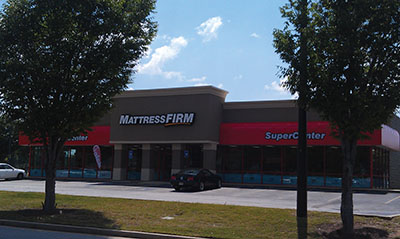Flooring maintenance: Do it or don’t — it reflects on your brand either way.
Flooring is an important part of a store’s environment and helps define the brand. Appearance is of utmost importance and in order for a floor to keep its original appearance, it needs to be cleaned and maintained according to product specifications. Unfortunately, many retailers do not properly clean and care for their flooring. The cost of not maintaining your floors is much more than you might think.
Kudos should be extended to those retail executives whose commitment to cleanliness and brand image starts in their office and is communicated all the way down to in-store personnel. Skimping on floor maintenance could be seen as a cost savings by some, but when store flooring is not maintained regularly for whatever reason, revenue will be lost.
Floor covering that is not cleaned regularly will typically not perform to expectations. What does this mean? In addition to a less than optimal appearance, it will tend to wear at a faster rate. An underperforming floor can lead to accelerated capital expenditures for repairs or even replacement. These unplanned expenses could compromise your budget. Even more significant is the dilution of brand identity. An ill-maintained floor can create a less than inviting atmosphere and a visitor who has a negative experience in one store will associate it with the brand, not just that particular store. Consumers do not enjoy shopping in a store that is unclean or in disrepair. The result is diminished sales and revenue not only for a specific store but throughout the retailer’s entire system. The longer the issue goes unaddressed, the more revenue is lost.
If the appropriate maintenance regimen will not work in a real-store situation because it won’t be followed, an alternative product could provide a better solution. There is no perfect floor covering and there is no perfect maintenance program.
In the case of carpeting, most retailers wait until the carpet is soiled or stained before enlisting the help of a maintenance company. By then it is often too late to produce satisfactory results. Imagine wearing a shirt for a year before having it cleaned. You can’t expect the shirt to be returned in its former pristine condition. One of many alternative options to broadloom carpet would be the use of carpet tiles to minimize the need for repairs or replacement.
Resilient flooring deserves closer scrutiny. A “no maintenance” resilient commercial floor doesn’t really exist. Careful consideration must be given to proper product selection and strategic placement in the store. Realistic expectations of product performance and maintenance protocols must also be developed. In fact, most resilient flooring requires an ongoing regimen of stripping, cleaning and recoating of floor finishes or dressings to maintain the visual that was intended when selected by Store Design.
 Most hardwood flooring used in retail applications has a finish coat that is either natural oil or synthetic (urethane, aluminum oxide or aluminum oxide enriched with ceramic crystals). Some oil finished floors in Europe are known to last hundreds of years; yet U.S. retailers wonder why their synthetic finished hardwood floors won’t last a couple of lease terms. Designers and store planners may assume that a floor coated with aluminum oxide is virtually indestructible and therefore requires little maintenance. However, these synthetic finishes will require some level of sanding and recoating after a few years. In most cases, this requires the entire floor to be treated. Normal maintenance of oil finished floors is done with simple spot sanding and re-oiling and can be completed overnight. Either way, a pre-planned, ongoing maintenance protocol is required.
Most hardwood flooring used in retail applications has a finish coat that is either natural oil or synthetic (urethane, aluminum oxide or aluminum oxide enriched with ceramic crystals). Some oil finished floors in Europe are known to last hundreds of years; yet U.S. retailers wonder why their synthetic finished hardwood floors won’t last a couple of lease terms. Designers and store planners may assume that a floor coated with aluminum oxide is virtually indestructible and therefore requires little maintenance. However, these synthetic finishes will require some level of sanding and recoating after a few years. In most cases, this requires the entire floor to be treated. Normal maintenance of oil finished floors is done with simple spot sanding and re-oiling and can be completed overnight. Either way, a pre-planned, ongoing maintenance protocol is required.
Porcelain tile flooring is the best bet for preventing maintenance issues. Porcelain is virtually non-porous, non-staining and scratch proof. Porcelain provides a durable, easy to clean (mop only) surface that will look great and last for years. If other products’ maintenance schedules seem too much, porcelain is a possible alternative with almost limitless visuals available.
Regardless of the flooring type or maintenance protocols enlisted, walk-off entry mats are particularly effective in preventing grit from being tracked onto flooring,which causes accelerated wear and soiling.
The best practice for creating a successful maintenance regimen for long lasting floors that reflect your brand image is to include flooring maintenance as one of the criteria used in selecting the flooring product. The first point of contact should be the flooring vendor or manufacturer in order to develop the proper maintenance routine. The second step is to contact a maintenance firm to help customize frequency based on traffic levels and other factors unique to the store. Once the proper maintenance program is determined, follow it and your floors will consistently reflect your brand.
 Mattress Firm experienced multiple maintenance issues with its floating laminate hardwood visual flooring. Water related events — such as leaking fire sprinkler heads, sink or toilet overflows — caused the floor to swell and buckle. Maintenance itself caused issues when use of excessive mop water caused the laminate to peak at the edges. The floating floor was not conducive to the bedding being moved regularly and the flooring would shift and pop out of place. Mattress Firm spent tens of thousands of dollars on repairs for all of these issues. Eventually, Mattress Firm chose to replace the floating laminate with a porcelain plank hardwood visual. This change not only reduced maintenance costs and effort, it decreased the cost of repairs due to wear and tear.
Mattress Firm experienced multiple maintenance issues with its floating laminate hardwood visual flooring. Water related events — such as leaking fire sprinkler heads, sink or toilet overflows — caused the floor to swell and buckle. Maintenance itself caused issues when use of excessive mop water caused the laminate to peak at the edges. The floating floor was not conducive to the bedding being moved regularly and the flooring would shift and pop out of place. Mattress Firm spent tens of thousands of dollars on repairs for all of these issues. Eventually, Mattress Firm chose to replace the floating laminate with a porcelain plank hardwood visual. This change not only reduced maintenance costs and effort, it decreased the cost of repairs due to wear and tear.
Retail Facilities and Store Planning departments often co-exist in parallel yet separate universes. Ideally, the managers of these two operational departments should communicate during the store design and product selection process so a mutual understanding of maintenance is achieved and common, realistic goals are expressed. Besides understanding budget and design goals, it is just as important — though possibly less obvious — to consider brand identity and customer experience. Cleanliness and consistency are key elements of the customer experience, which ultimately drives repeat sales and revenue.
— Earl Wasserman is founder and chief innovation officer at Storefloors, a leading national supplier of customized commercial flooring solutions based in Atlanta. Wasserman has more than 40 years’ industry experience, including contracting, flooring installation, flooring design, product sales, problem identification and resolution. He may be reached at [email protected].
